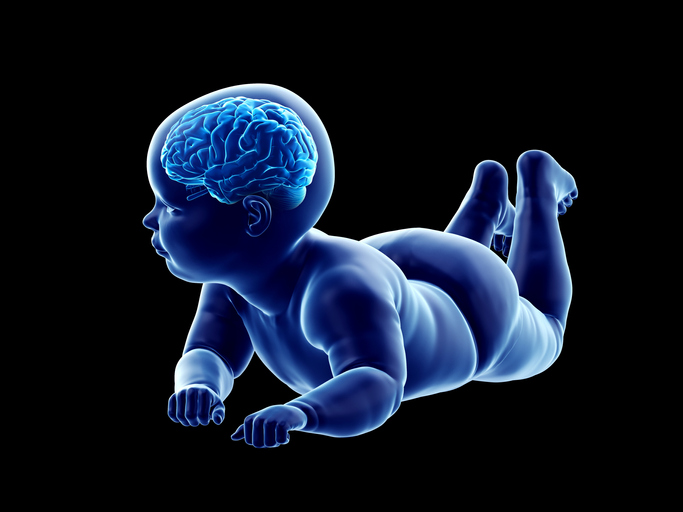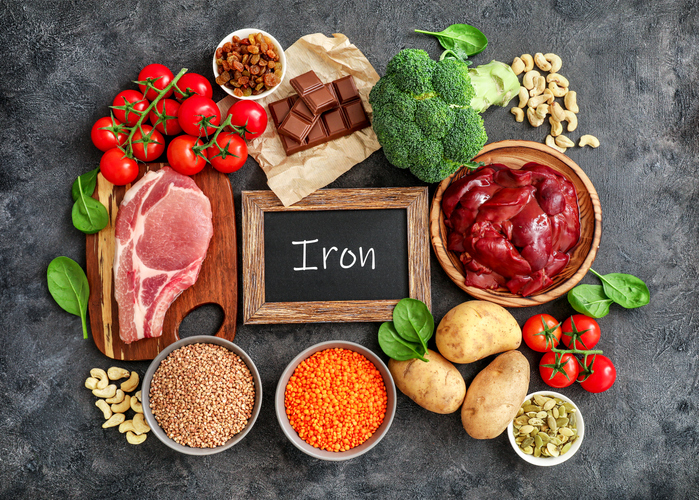Trying to Conceive? Test Your Iron First For Your Baby’s Brain

By Joy Stephenson-Laws, JD, Founder
Fetal brain development starts just three and a half weeks after conception. By week five, the brain really starts to develop. At this time, some women are pregnant and don’t even know it. If they are also deficient in iron, this may result in giving birth to a baby with cognitive issues.
“Numerous studies have found that mothers with low iron levels during pregnancy have a higher risk of giving birth to a child that develops cognitive impairments like autism, attention deficit syndrome, and learning disabilities,” according to this Medical Xpress report that discusses a recent study regarding gestational iron deficiency (GID) in mice.
The study discovered that animals born to mice with iron deficiencies “react abnormally to excitatory brain stimuli.” Furthermore, the researchers discovered that giving these iron deficient animals supplements at birth did not “restore functional impairment that appears later in life.”
This is huge, because so many people think that they do not have to focus on nutrition until they are actually pregnant. It’s clear, however, that having optimal nutrient levels before conception could make a major difference in the health and development of a baby’s most vital organs. As mentioned, many do not know they are even pregnant until well after the first three to five weeks of conception and by then fetal brain development is well on its way.

Studies have shown that genetic material passed through sperm is affected by diet, meaning that a man who does not eat healthily and then gets a woman pregnant is at a higher risk of having a baby that will develop birth defects and health issues such as diabetes and obesity. You can read more about this here.
The importance of iron.
Iron is a critical mineral that every single cell in your body needs. It is needed to make hemoglobin, a component of your red blood cells that delivers oxygen to all the cells in your body. Without adequate iron, your body can’t carry enough oxygen to your vital organs. Having an iron deficiency could also lead to anemia.
Iron also plays a role in the synthesis of neurotransmitters. Think of neurotransmitters as the brain’s communication tool. Without them, your brain wouldn’t be able to tell the heart to beat, your stomach to digest food or your lungs to expand and contract. Neurotransmitters are also responsible for telling your brain to release the proper amounts of serotonin, dopamine, norepinephrine and all the other mood balancing chemicals that are vital to providing the body balance.
These neurotransmitters are forming early in utero, so it would make sense that they need adequate iron to develop properly.
“By looking at the brains of adults and young mice born with known GID [gestational iron deficiency], they found disruption of interneurons, cells that control the balance of excitation and inhibition and ensure that the mature brain can respond appropriately to incoming signals,” according to the Medical Xpress report.
The goal of the researchers of this study is to next do another study in which they use brains more similar to human brains.
Iron deficiency is one of the most common micronutrient deficiencies. Read here to learn if you may be at risk for iron deficiency. As always, taking a comprehensive nutrient test will identify whether you are deficient in iron or any other micronutrients (vitamins and minerals). If you are, a competent healthcare professional can help you make the necessary dietary changes and recommend quality supplements if necessary.
Do not panic if you are well into a pregnancy and discover that you are deficient in iron. All you can do is work to correct this deficiency as soon as possible with your doctor. I also previously blogged about how a study conducted on a small test group of adolescent students in rural India revealed improved cognitive skills with increased iron consumption. According to the Penn State researchers, students who consumed an iron-fortified version of the grain, pearl millet, showed improved cognitive productivity.
Foods rich in iron.There are two forms of iron in food: heme and non-heme. Heme iron is absorbed two to three times more efficiently than non-heme. Heme iron foods include meat, fish and poultry.
According to one source, you absorb up to 30 percent of the heme iron you consume.
But, of course, not everyone eats meat and seafood.
“Non-heme iron is found in plant-based foods such as fruits, vegetables and nuts. Foods with non-heme iron are still an important part of a nutritious, well-balanced diet, but the iron contained in these foods won’t be absorbed as completely. You absorb between two and 10 percent of the non-heme iron that you consume.”
Spinach is a great plant-based source of iron, and cooking it makes the iron more available to your body (just do not overcook it, as this will cause the spinach to lose nutrient value).
Dark Chocolate - Who says chocolate is a guilty pleasure? Dark chocolate is packed with iron-rich goodness. If you are deciding to indulge a bit and derive your iron from chocolate, it is recommended to select chocolate that is a minimum of 70% cocoa to get maximum benefits. One serving, about 1 ounce, contains 3.3mg of iron.
Broccoli - Broccoli is an incredibly nutritious vegetable and viable source of iron. A 1-cup serving of cooked broccoli contains 1 mg of iron, which is 6% of the RDI (recommended daily intake).
Lentils - These legumes contain 3.3 milligrams of iron per 100 grams.
To find out how much iron you need on a daily basis based on age, sex and pregnancy, check out the National Institutes of Health’s Office of Dietary Supplements. And for more information on healthy conception and pregnancy, check out these pH Labs blogs.
Enjoy your healthy life!
Disclaimer: This article is not intended to provide medical advice. Please consult with your doctor or another competent healthcare practitioner to get specific medical advice for your situation.
The pH professional health care team includes recognized experts from a variety of health care and related disciplines, including physicians, attorneys, nutritionists, nurses, and certified fitness instructors. This team also includes the members of the pH Medical Advisory Board, which constantly monitors all pH programs, products, and services. To learn more about the pH Medical Advisory Board, click here.







